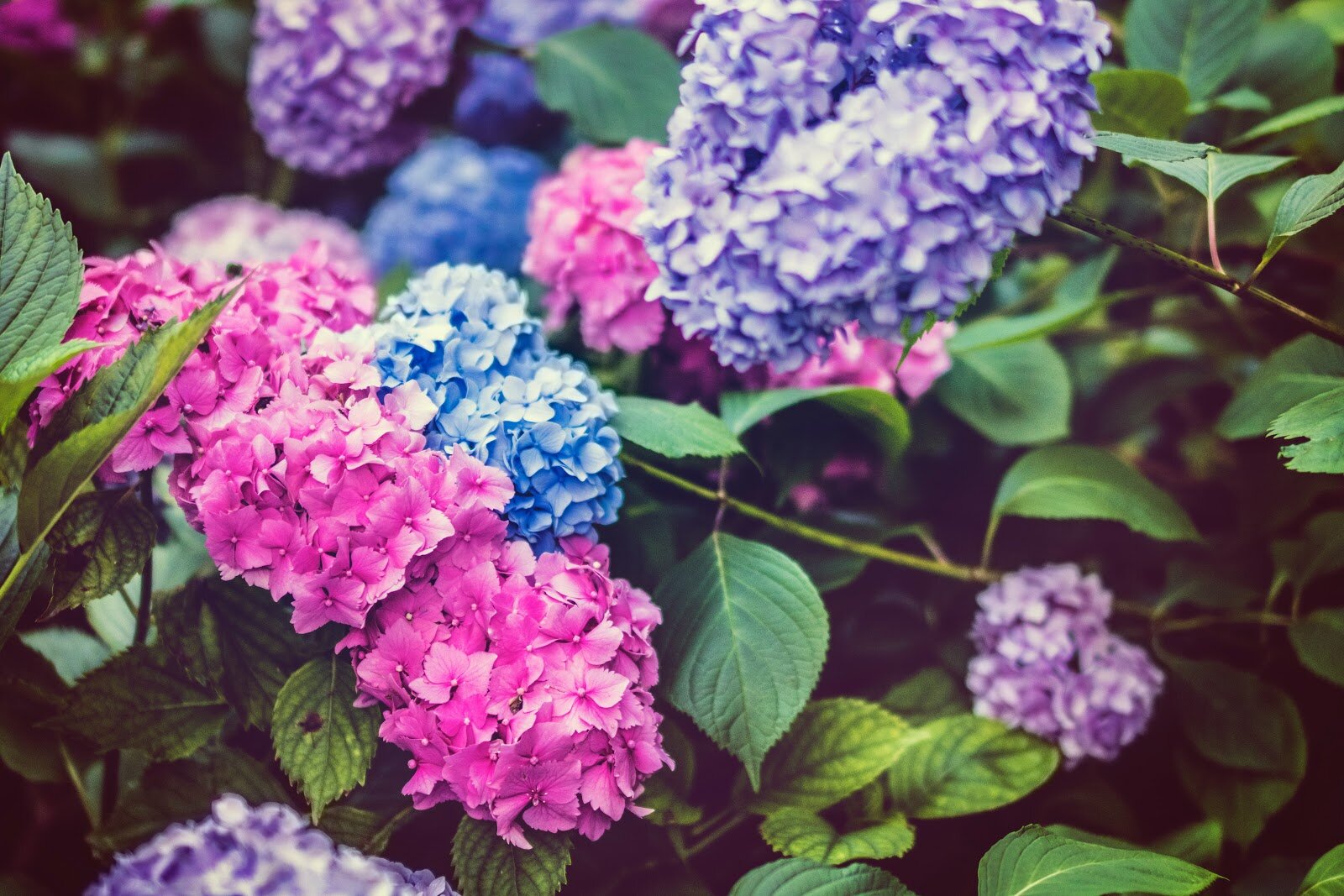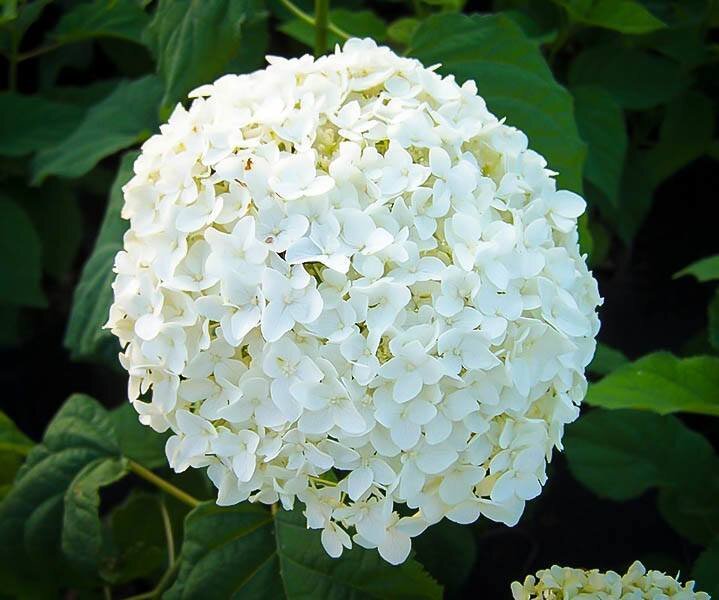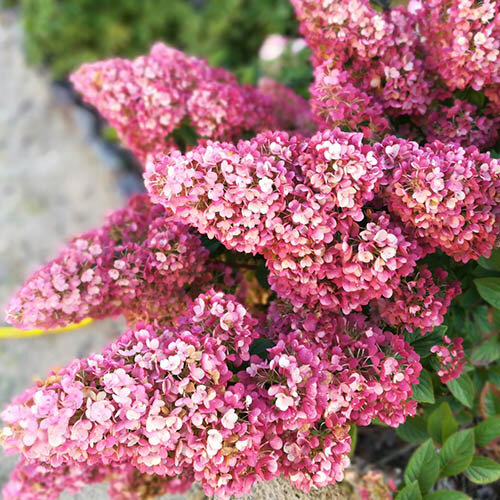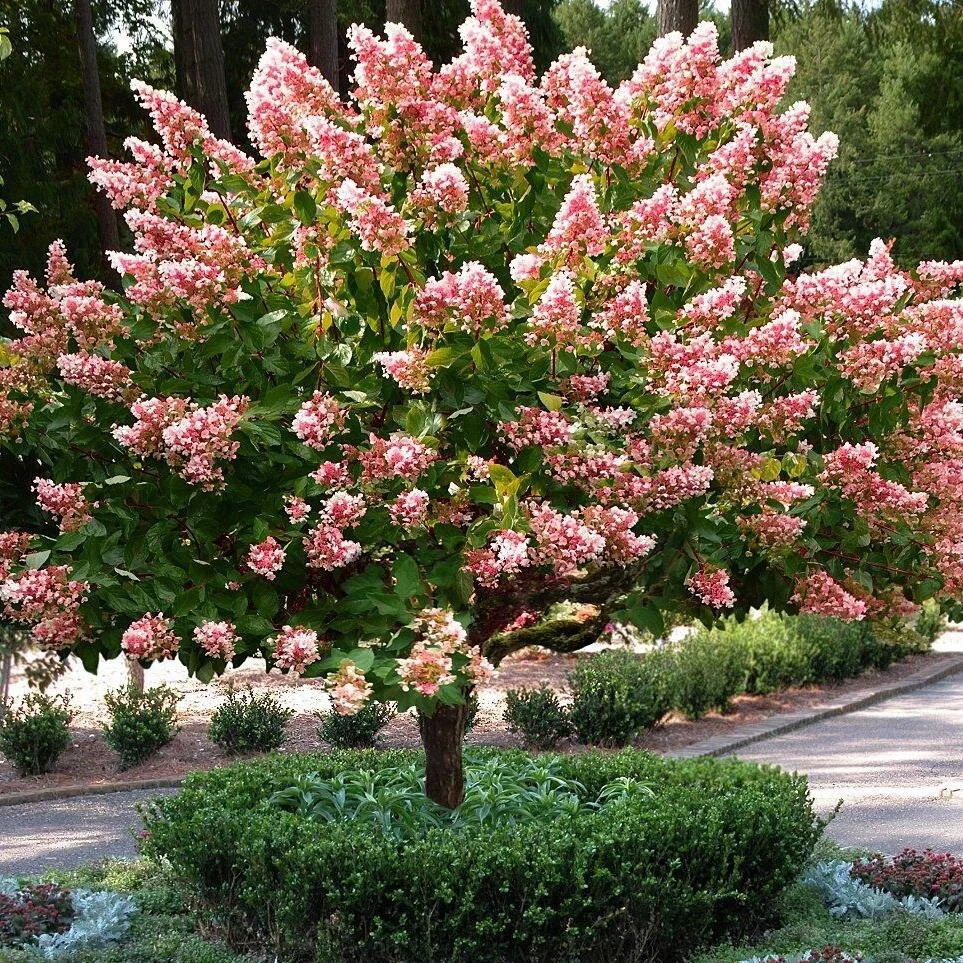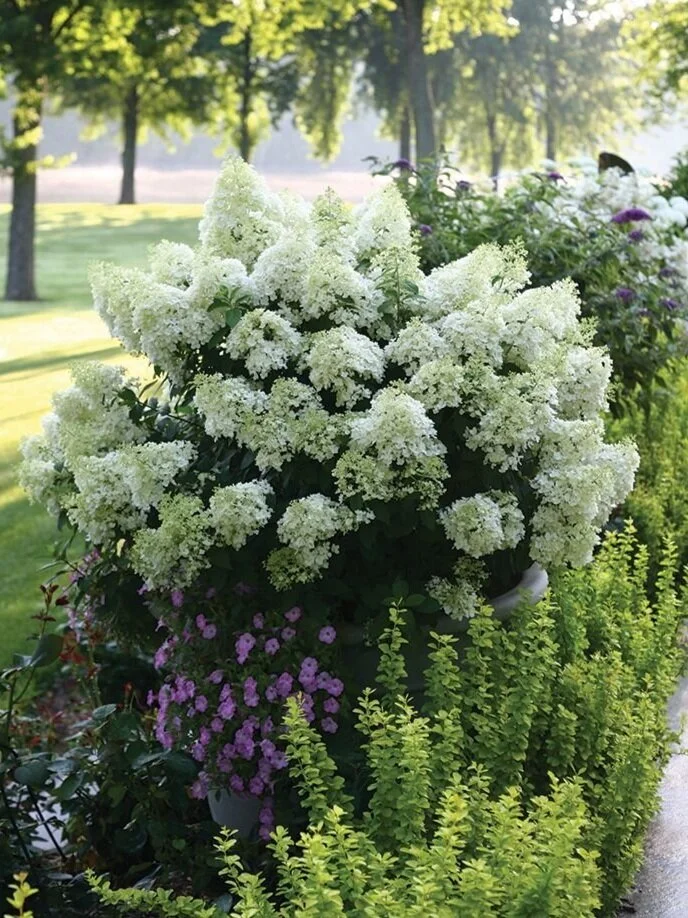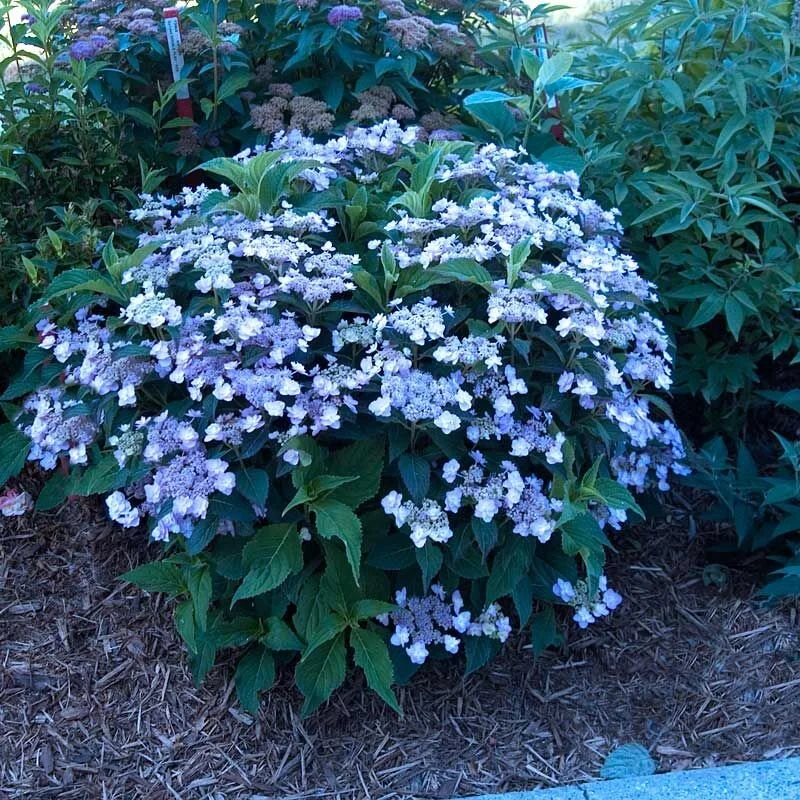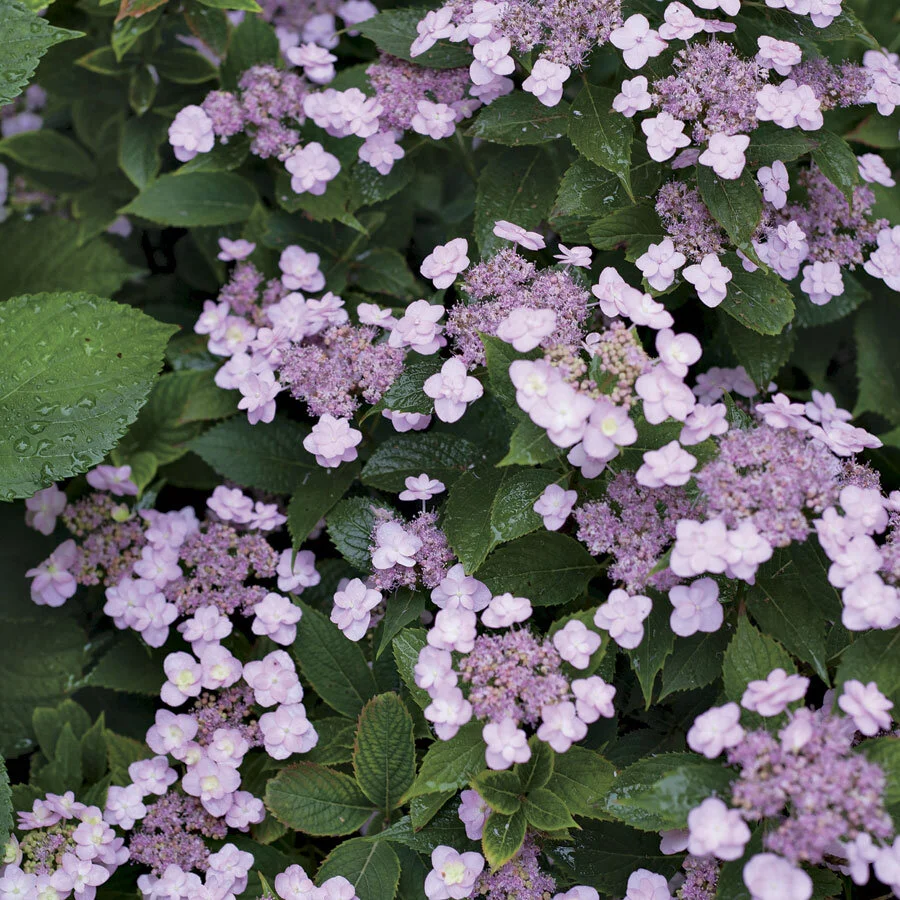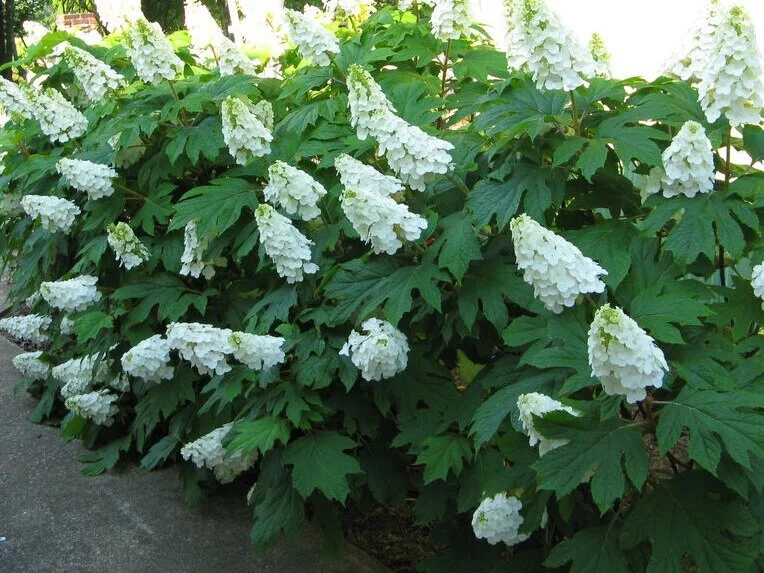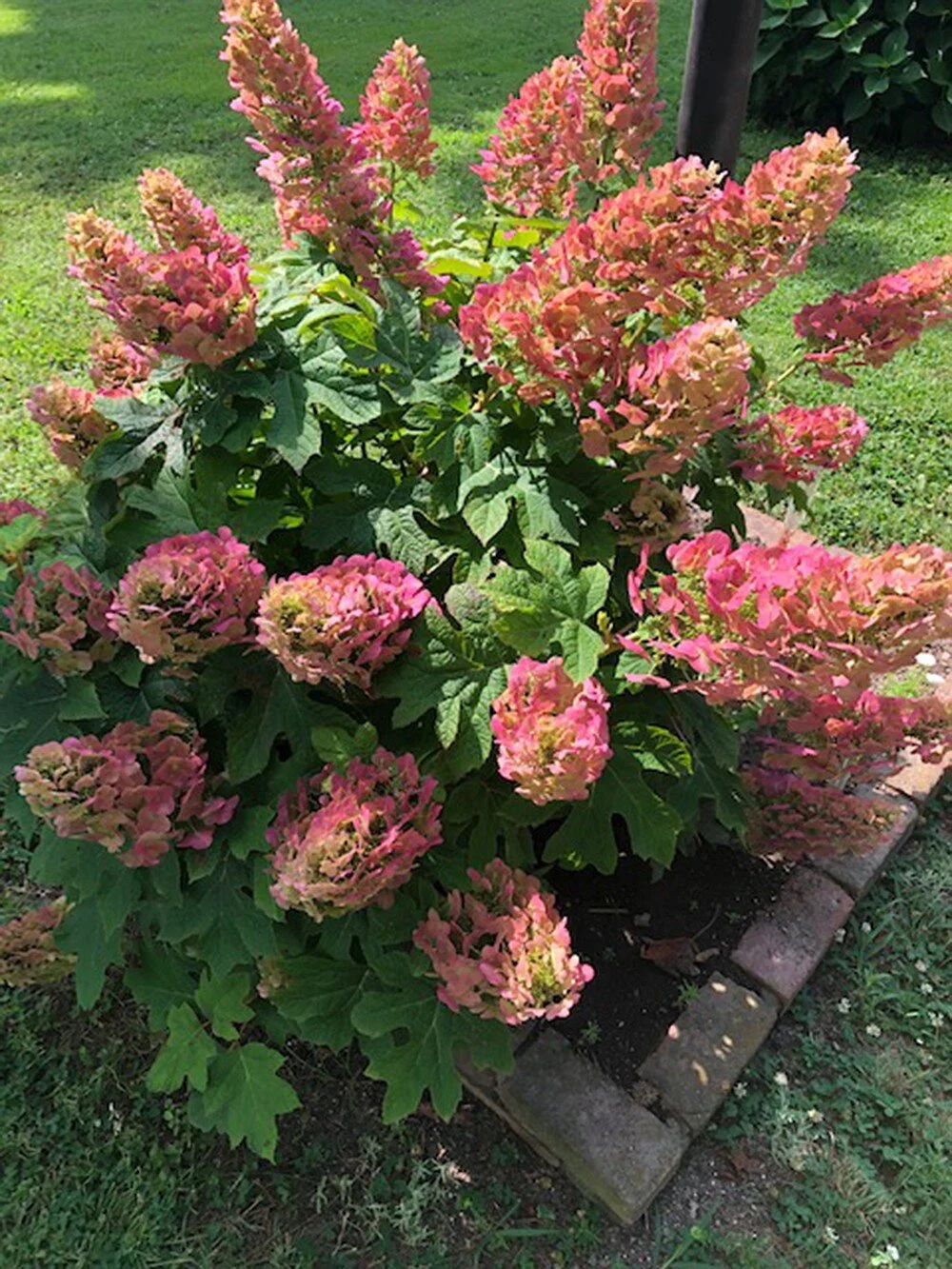All About Hydrangeas: How to Get Beautiful Blooms in Our Area
Who doesn’t like hydrangeas? Not many people can resist these shrubs (and trees) with their beautiful, large blooms. They produce a truly magnificent display! However, some types of hydrangeas perform better in our Seacoast area than others.
In this blog, we will discuss the different types, expectations, and care for hydrangeas in our region. These sensitive beauties need proper care to thrive, so contact us if you want to discuss planting or maintenance for your hydrangeas of choice.
Start With Your Zone
First, you need to keep in mind your own cold hardiness zone, ‘cause it may be different from your fellow Seacoast residents here in coastal New Hampshire and southern Maine. Cold hardiness zones are designated by the USDA, and you can find your hardiness zone on their website. Depending on where you live in Northern New England, you will fall between 4b and 6a. Those of you closest to the ocean will be falling in the 6 range. Those of you inland could fall into 4b, brrr!
Hydrangea macrophylla ‘Endless Summer’
Big Toothed Hydrangea: Hydrangea macrophylla
There are many cultivars of this species of hydrangea. Most of these hydrangeas are mop heads. The flowers are like round balls. Although they survive our winters quite well in our hardiness zones, their flower buds often do not.
Why do they look so nice from the greenhouse? The plants that look full of blooms from the store were grown down south and transported here. They already had the flower buds form.
Why do they look so good on Cape Cod? The Cape juts out into the ocean and therefore the winters are slightly warmer. The growing season is longer, which provides more time for flower formation. The most popular variety is ‘Endless Summer’ developed by Michael Dirr (the godfather of present day horticulture). The flowers are considered remontant, which means reblooming (flowering on both new and old wood).
What goes wrong and what can we do to help? If the growing conditions are right, the new flowers will form toward the end of the season. What often occurs is that the flowers on the old wood die and the season is not long enough for the new flowers to form. (Endless Bummer?) We have been experimenting with burlap to see if we can preserve the flower buds. So far, there seems to be a positive effect. We will keep you posted! There are slip covers available for sale, but we haven’t heard of anyone using them with success yet. One person we know took the cover off too late and was unsuccessful. Snow is a good insulator. That is why you will often see blooms at the very bottom of the plant. Yes, you are not alone!
Can I change the color of these hydrangeas? These are the type of hydrangeas that react to soil pH for color changes. Adding soil acidifier will change the flowers to blue. Adding an alkaline product will produce pink flowers. A neutral pH will produce purple!
Hydrangea macrophylla ‘Bloomstruck’
Hydrangea macrophylla ‘Summer Crush’
A couple of new choices: Hydrangea m. ‘Bloomstruck’ and ‘Summer Crush’ are two new additions to the ‘Endless Summer’ collection. Both are supposed to be improved from the original ‘Endless Summer’ hydrangea bred at Bailey Nurseries. ‘Bloomstruck’ does tend to have more flowers the following year and ‘Summer Crush’ is the closest to a red hydrangea you can get to date (they still have a raspberry color). You can add phosphorus to help encourage flower initiation, but the flower buds still need to survive the winter before you worry about color change.
Hydrangea macrophylla ‘Twist and Shout’
Planting, pruning, and care tips: Shrubs planted near buildings, tucked away in little microclimates, may have a better chance at bloom survival. Pruning should occur once the new growth appears in the spring. You don’t want to cut off any potential blooms, so try to resist cutting the “ugly sticks.” On hot summer days, these plants will wilt, even when established. The hydra in their name says it all and this particular species is very water dependent. Please keep this in mind when selecting these plants. ‘Twist and shout’ is related to the ‘Endless Summer’ but it is a lace cap. This means that the flowers are flatter and have a lacey look. These seem to rebloom more reliably, from what we have seen. This type of hydrangea can also be color changing with pH level alteration. This plant will make you want to twist and shout!
Hydrangea a. ‘Annabelle’
Hydrangea a. ‘Invincibelle’
Hydrangea a. ‘Incrediball’
Smooth Hydrangea: Hydrangea arborescens
This is a wonderful hydrangea for our region. There are white and pink varieties. (Sorry, these don’t change color and blue hasn’t been developed as a variety yet.) Smooth hydrangeas are hardy to our area and flower reliably. They colonize your garden area overtime and look great in a large planting. These hydrangeas have mop heads -- sometimes the heads are so large they will flop over. Planting them together in larger plantings helps to hold them together. ‘Annabelle’ is one of the older, popular varieties. ‘Incrediball’ is a Proven Winner (PW) and is known for large blooms and stronger stems (less flopping). ‘Invincibelle Spirit’ is a variety that has a soft pink color (mauve). These hydrangeas can be cut down to one foot in the fall and will regrow and rebloom the following year.
Hydrangea p. ‘Strawberry Sundae’
Hydrangea p. ‘Quickfire’ tree form
Hydrangea p. ‘Bobo’
Panicled Hydrangeas: Hydrangea paniculata
These hydrangeas are extremely hardy to our area. This type bears round and cone-shaped flowers, depending on the variety. It also comes in shrub or tree form. Panicled hydrangeas flower on the new wood, so you can prune them after they are done blooming or in the spring. These hydrangeas flower in late summer into the fall. The flowers slowly age into blush and rosy colors. ‘Pee Gee’ is an older variety that has been popular for some time. Newer varieties like ‘Strawberry Sundae,’ ‘Limelight,’ and ‘Quickfire’ have become popular in both tree and shrub forms. One of our personal favorites is ‘Bobo.’ This variety stays short with an abundance of blooms. One thing to think about when selecting panicled hydrangeas is pruning. These shrubs grow quickly and may droop if not pruned at the right times. ‘Bobo’ tends to stay small with less pruning. ‘Little Lamb’ needs pruning and so does ‘Little Lime’ and ‘Little Quickfire’. ‘Bobo’ does need a little pruning but not nearly as much as any of the other varieties.
Hydrangea s. ‘Tuff Stuff’ Blue
Hydrangea serrata a good alternative to ‘Endless Summer’
Hydrangea s. ‘Tuff Stuff’ Pink
Mountain Hydrangea: Hydrangea serrata
Originating from Korea and Japan, these hydrangeas are very hardy to our area and look very similar to some of the Hydrangea macrophylla. They have soft lacecap flowers or mop heads, depending on the variety. They often stay short and are very hardy (leaves and flowers)! ‘Tuff Stuff,’ ‘Little Tuff Stuff,’ and ‘Tuff Stuff Ah-Ha’ are a great line that I really like. They are all PW. Personally, we’re not always sold on Proven Winners because some of them don’t do as well in our area (but most likely do well in slightly warmer climates). The ‘Tuff Stuff’ hydrangea line is one we have seen do well -- Site Structures maintenance manager Leigh Lessard observed a trial at a nursery near Biddeford, Maine and it flowered reliably year after year. This little plant is truly tough stuff! These hydrangeas can also change color due to pH levels.
Hydrange q. ‘Alice’
Hydrangea q. ‘Ruby Slippers’
Oakleaf Hydrangea: Hydrangea quercifolia
These hydrangeas are not always reliable bloomers, but the foliage alone is worth having them in your landscape. The fall color is a delightful maroon! The flowers are a conical white. The bark of the shrub gets a bit peel-y and interesting looking.
Now you know all you need to know, right?
Knowing what kind of hydrangeas you have will help you understand how to care for them. This knowledge will help with the expectations of what you will get with each variety, but there is so much more to hydrangeas! We are happy to identify them for you and take care of them. Site Structures’ garden bed maintenance team is well versed in these plants and know when to prune. For those of you looking to plant native shrubs, the smooth and oakleaf hydrangeas are native to North America. The others are non-native but still provide nectar for pollinators, like this panicled hydrangea near Leigh’s house. We love the Monarchs!
Until next time,
Leigh Lessard, Director of Landscape Maintenance, and the Site Structures Crew
To schedule a consultation, please email Leigh Lessard at leigh@sitestructureslandscape.com or call Site Structures at (207) 438-9995.

